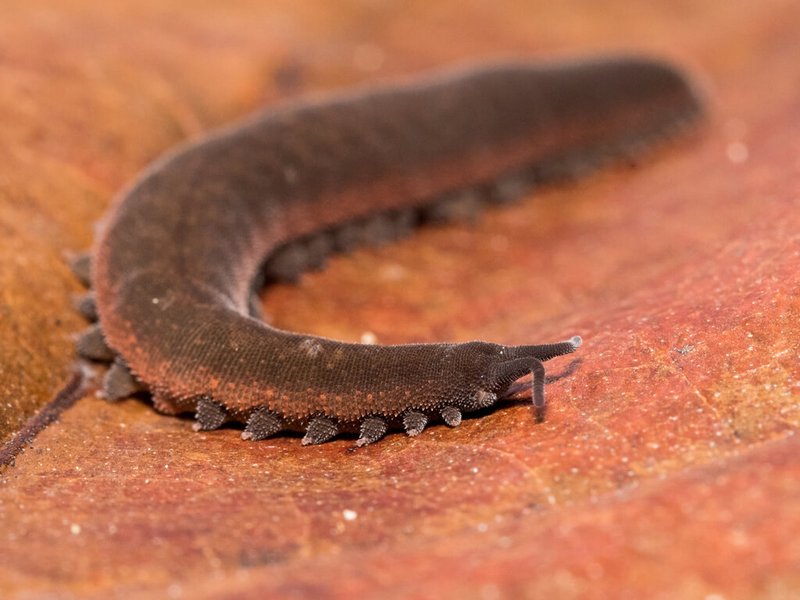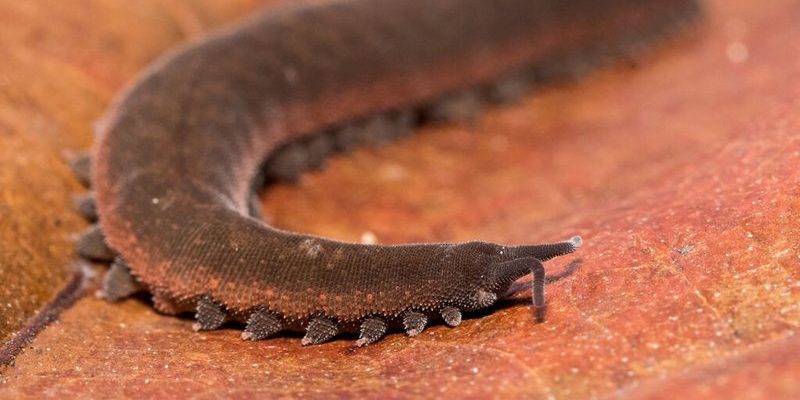
Identifying velvet worms can be a delightful challenge, especially since they come in various colors, patterns, and sizes. Just like spotting different types of butterflies, knowing what to look for can enhance your outdoor adventures. In this article, we’ll explore the unique features of velvet worms to help you recognize them in their natural habitat.
What Are Velvet Worms?
Before diving into their identifying features, let’s take a moment to appreciate what velvet worms actually are. These little wonders belong to a group of animals that has been around since the time of the dinosaurs, making them a living piece of history. They have a soft, velvety body, which is where they get their name. Their skin is covered in tiny sensory bristles, helping them navigate through their humid homes.
Velvet worms are not insects or worms, even though their name may suggest that. They are more closely related to arthropods, like spiders and crustaceans. This surprising connection can sometimes throw people off when trying to classify them. Isn’t it amazing how nature brings such diverse creatures together in unexpected ways?
Colors of Velvet Worms
One of the first things you might notice when you spot a velvet worm is its color. These creatures can show off a range of hues, from earthy browns to vibrant greens and blues. The colors often play a crucial role in their survival. Darker shades blend well with the damp forest floor, while brighter colors can warn predators that they might be unappetizing.
For instance, you may see velvet worms that are a deep green, allowing them to camouflage among moss and leaves. Others might be a striking blue, which can signal toxicity to potential threats. The color variations can also depend on the specific species, making it easier to identify them.
If you’re lucky enough to spot a velvet worm in the wild, take a moment to appreciate its unique coloration. It’s like finding a hidden gem in nature!
Patterns and Markings
Beyond their colors, velvet worms often feature distinctive patterns and markings that help differentiate species. Some have spots or stripes that can vary in size and intensity. These patterns are not just for show; they can also play a role in camouflage and communication.
For example, some velvet worms may have a series of small spots along their sides, while others exhibit intricate striped patterns. These markings have evolved over time to help them blend in with their surroundings or to signal to mates. Imagine trying to impress a potential partner with your unique style—nature does the same for its creatures!
When identifying a velvet worm, take a close look at its body. You might discover subtle differences in patterns that can tell you a lot about its species. It’s like piecing together a natural puzzle.
Size Variations Among Velvet Worms
Now, let’s talk about size. Velvet worms can vary significantly in length, which is another clue for identification. Most of them measure between 5 to 15 centimeters long, but some species can reach up to 30 centimeters!
The smaller species often inhabit dense, subtropical forests, while the larger ones might be found in more open habitats. Here’s the thing: when you spot a velvet worm, size can give you context about its environment. For instance, a larger velvet worm might be more visible and could be easier to find, while a smaller one may be camouflaged among leaf litter.
Keep in mind that size isn’t just about length; it can also refer to the worm’s overall body thickness. Some might appear chubby, while others look slender. Observing these differences can enrich your understanding of their behavior and habitat preferences.
Habitat and Behavior
Understanding where velvet worms live can help you identify them more easily. These creatures prefer humid, sheltered environments where they can thrive. You’ll often find them hiding under rocks, logs, or leaf litter. It’s like they’ve created their own cozy little homes that protect them from drying out.
Their behavior is equally fascinating. Velvet worms are nocturnal hunters, using their slime to catch prey, such as insects. This unique hunting method sets them apart from many other creatures. Imagine being able to shoot sticky slime to trap your food—pretty cool, right? By observing their behavior, you might catch a glimpse of how they use their environment to their advantage.
If you ever find yourself exploring a damp forest at night, keep an eye out for these little hunters. Watching them in action can be a memorable experience!
Common Species of Velvet Worms
There are over 200 species of velvet worms, each with its own unique traits. Some of the most commonly found species include *Peripatus*, *Euperipatoides*, and *Onychophagus*. Knowing what species you might encounter can enhance your identification skills.
For example, *Peripatus* species are generally more widespread and often have a more varied coloration. Meanwhile, *Euperipatoides* species tend to have unique patterns and live in specific regions, making them easier to identify.
When you head out into the field, familiarize yourself with these species. Each one adds to the rich tapestry of life in our ecosystems, and identifying them can be a fun challenge!
Why Identifying Velvet Worms Matters
You might be wondering, “Why should I care about identifying velvet worms?” Great question! Understanding these animals can provide insight into our ecosystems. Velvet worms play a vital role as predators, helping control insect populations. They also serve as indicators of ecosystem health.
Moreover, learning about them can spark an appreciation for biodiversity. The more you know about different species, the more you realize how interconnected life is. By sharing this knowledge, we encourage others to protect these incredible creatures and their habitats.
So next time you’re out in nature, take a moment to look down and search for these fascinating velvet worms. You never know what discoveries await you!
In conclusion, identifying velvet worms by their colors, patterns, and sizes opens up a whole new world of exploration. These unique creatures may be small, but they play an important role in their ecosystems. So grab your curiosity and get out there—who knows what you might find!

